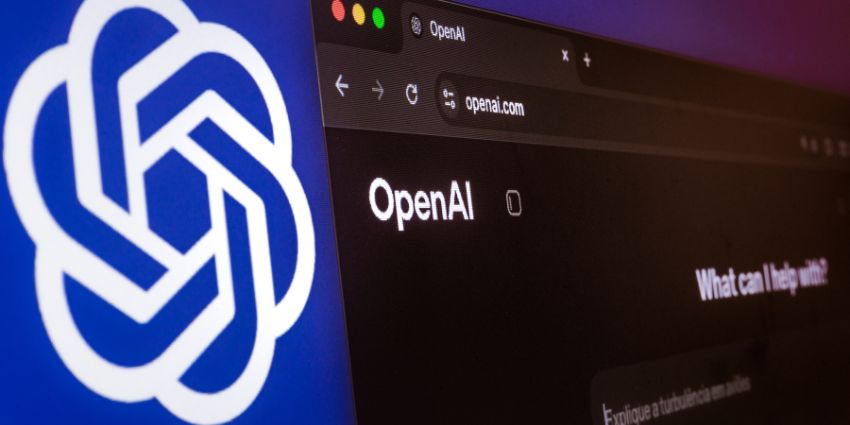If you’re leading IT or compliance in a government environment, you’ve already seen the cracks: VPN downtime, identity confusion, untracked tools, and, in the worst cases, data exposure impacting real people.
Hybrid work security in government and public sector organizations is becoming more complicated and essential. We’re talking about ensuring security around citizen-sensitive systems, such as case files, health records, and infrastructure maps, while letting teams work flexibly from home, field sites, or shared office space.
For context: 81 percent of public sector organizations say their IT infrastructures weren’t built to support secure hybrid workflows. Yet demand is unrelenting: services that used to be on-prem, like citizen portals and case management tools, are now accessed remotely, often by subcontractors or agencies.
The urgency is real: agencies must meet GDPR compliance public sector standards, even when data travels across remote devices, contractors, and cloud apps. They also must ensure consistent, secure remote access for public services.
Hybrid Work Security in Government: What’s Breaking
Public sector IT leaders have been asked to do something almost impossible: support productivity anywhere, maintain citizen services, and comply with some of the world’s strictest data regulations, all on infrastructure that was, in many cases, designed before remote access was even a thing.
The result? Hybrid work security in government is buckling under pressure.
Compliance Complexity That Never Sleeps
Unlike private sector orgs, government departments are accountable to everyone: auditors, regulators, the press, and the public. GDPR, NIS2, the UK’s Digital Economy Act, and Freedom of Information requirements create complexity, expanding in a hybrid workplace.
Who accessed what? From where? On what device? With what level of encryption? If those questions can’t be answered instantly, you’re not compliant and not ready for the next audit, breach investigation, or FOI request.
To make things harder, the UK is pushing ahead with AI model governance frameworks, but most public sector agencies don’t yet have basic controls for AI adoption. That’s a compliance time bomb.
Citizen Data Exposure and Real Trust Risk
Government teams manage data people can’t afford to lose: disability applications, planning objections, housing allocations, police records. It’s deeply personal information; unlike credit card data, it doesn’t expire.
So when citizen data leaks via a misconfigured endpoint or is sent over an unsanctioned chat tool, the damage goes beyond the breach. It breaks trust.
Worse, much of this data lives in legacy systems with limited logging, making breach response and attribution slow and messy.
Shadow IT, Shadow AI, and the Proliferation of “Fast Fixes”
Productivity demands are growing. So public servants turn to quick tools: AI-powered summarization, online forms, free whiteboard apps, or file-sharing tools “just for today.” IT rarely knows about it, and risk teams don’t see it until the FOI comes in or the breach report lands.
Shadow IT has been around for years, but shadow AI is newer and much more dangerous. When a caseworker drops a benefits file into an AI tool, that data may leave your governance perimeter completely. You can’t claw it back with no legal safeguards in consumer AI apps.
Endpoint Chaos and BYOD Blind Spots
Field inspectors, healthcare workers, and planning officers increasingly rely on tablets and mobile devices. Often, those devices are personal or shared. Encryption isn’t consistent. Updates lag, and UEM policies, if they exist, don’t always apply to third-party or contract workers.
In practice, there’s no reliable way to verify the device’s security posture when accessing your systems. Yet, as far as regulators are concerned, that’s your responsibility.
Identity Sprawl and the ‘Too Many Logins’ Problem
It’s not uncommon for a public sector worker to have six or more logins to access citizen records, messaging tools, external partner platforms, and UC apps. Many use weak passwords, and some reuse them. MFA fatigue sets in quickly, and when phishing strikes, most attackers don’t need to be sophisticated, just persistent.
A breached identity means access to entire systems. If you can’t isolate roles and enforce per-user policies, your security posture doesn’t exist.
Legacy Infrastructure Meets Cloud Ambition
Many agencies are still tied to critical legacy systems, such as planning databases, law enforcement archives, and health record systems that predate the cloud. However, hybrid work and modern digital services require integration with cloud-first platforms.
That creates brittle connections, patchwork APIs, and imperfect security workarounds that attackers love to exploit. If one side goes down, the rest often follow.
Real-World Hybrid Security for Government Teams
Hybrid work in government needs real security tools that fit public services. These are solutions real IT leaders use today to meet hybrid work security in government, ensure GDPR compliance in the public sector, and deliver remote access for public services without chaos.
Zero Trust Access
Legacy VPNs assume network location means trust. That model fails when staff work across home, office hubs, and contractor environments.
Zero Trust Network Access changes that. Every user, device, and session must prove its identity and integrity before getting access. Access is limited or blocked if a device shows risk or the context looks off. This strategy works.
DLUHC in the UK rolled out Zscaler ZTNA to replace VPN access and prevented more than 81 million policy violations in 3 months, while reducing time to connect by 80 percent.
SASE: Security and Networking in One Platform
Hybrid security stacks too often get thrown together with VPNs, proxies, firewalls, and agents with major gaps. Secure Access Service Edge (SASE) combines network and security control: ZFNA, cloud firewall, CASB, SWG, into one platform. You manage access globally, monitor traffic, enforce compliance, and reduce tool sprawl.
For an example of how well this works, look at how Palo Alto Networks helped Vermont Judiciary reduce MTTR by 99 percent, save $350k in operating costs, and improve uptime by 100 percent. The solution even improved network capacity by 50 times.
Trusted Collaboration Platforms: UC You Can Audit
Government conversations flow everywhere, across Teams, WhatsApp, SMS, Slack, and many platforms that aren’t covered by existing logging or retention rules.
Modern UC platforms must enforce encryption and track every message, even on mobile. They need retention policies aligned with GDPR and accessible audit trails across channels. Some companies, like Microsoft and Cisco, offer specific platforms for government entities.
Others help public sector organizations build security into their communications. For instance, LeapXpert helps agencies monitor chat and messaging across multiple channels.
Central UC Management: Cut the Fragmentation
Multiple separate systems, such as council platforms, health teams, and remote workers, mean inconsistent controls, patching, and governance. Unified UC management brings all endpoints, telephony systems, and collaboration tools into one control plane.
Compliance, upgrades, and policy enforcement happen centrally. When a national government agency used VOSS to consolidate its UC stack into one platform. Audit prep time fell, governance improved, and headaches disappeared.
AI That’s Approved: Productivity with Guardrails
Departments need smart assistants, but not at the expense of citizen data exposure.
Federally-approved AI tools, like Zoom’s AI Companion (now FedRAMP-certified), let staff use AI for transcription and meeting summarization, with strict compliance controls.
Other innovators, like Theta Lake, are even rolling out AI compliance suites, designed to help businesses in all sectors monitor and govern how AI systems are actually used. This allows companies to innovate and grow without compromising security.
Embedded Hybrid Work Security in Government
Security that gets in the way gets ignored. The best public sector IT teams know that. So instead of forcing users to work around clunky tools, they’re embedding protection into the workflows people already use, enabling:
- Risk Detection Without the Noise: Modern tools go beyond blocking access; they evaluate context. If a login request comes from a new device, outside work hours, or with risky behavior, access is limited or step-up authentication is triggered. It’s smart enough to spot the outliers, not punish the norm.
- Real-Time Training: Phishing isn’t a once-a-year problem. The best programs now simulate threats inside real systems, like a suspicious email in Teams. When users click, they get instant, on-the-spot guidance. I
- Policy Nudges for Shadow AI: When staff paste citizen data into unapproved AI tools, they’re often unaware of the risk. Simple nudges like: “This tool isn’t approved for sensitive data” can redirect behavior without slowing down productivity.
- Just-in-Time Access for Temporary Workers: Agencies rely on contractors and seasonal staff. With just-in-time access, they get exactly what they need at the time they need it. Then, it’s automatically revoked.
- Unified Control Across Services: One dashboard. One policy set. Whether it’s housing, licensing, or benefits, governments are streamlining hybrid work controls across all teams, apps, and clouds.
No More Excuses, Just Better Systems
The truth? Hybrid work isn’t new anymore. It’s normal. And hybrid government work security shouldn’t still catch agencies off guard.
Public trust is earned through consistency; services that stay live, data that stays protected, and breaches that never make the news. But none of that happens without the right architecture in place. This isn’t about locking everything down. It’s about unlocking agility without losing sight of compliance or compromising citizen data along the way.
For IT and compliance leaders, this is the moment to act. Whether you’re dealing with legacy infrastructure, fragmented platforms, or stretched teams, the tools exist to build smarter security today. Ready to evolve? Explore our complete guide to hybrid work security.







